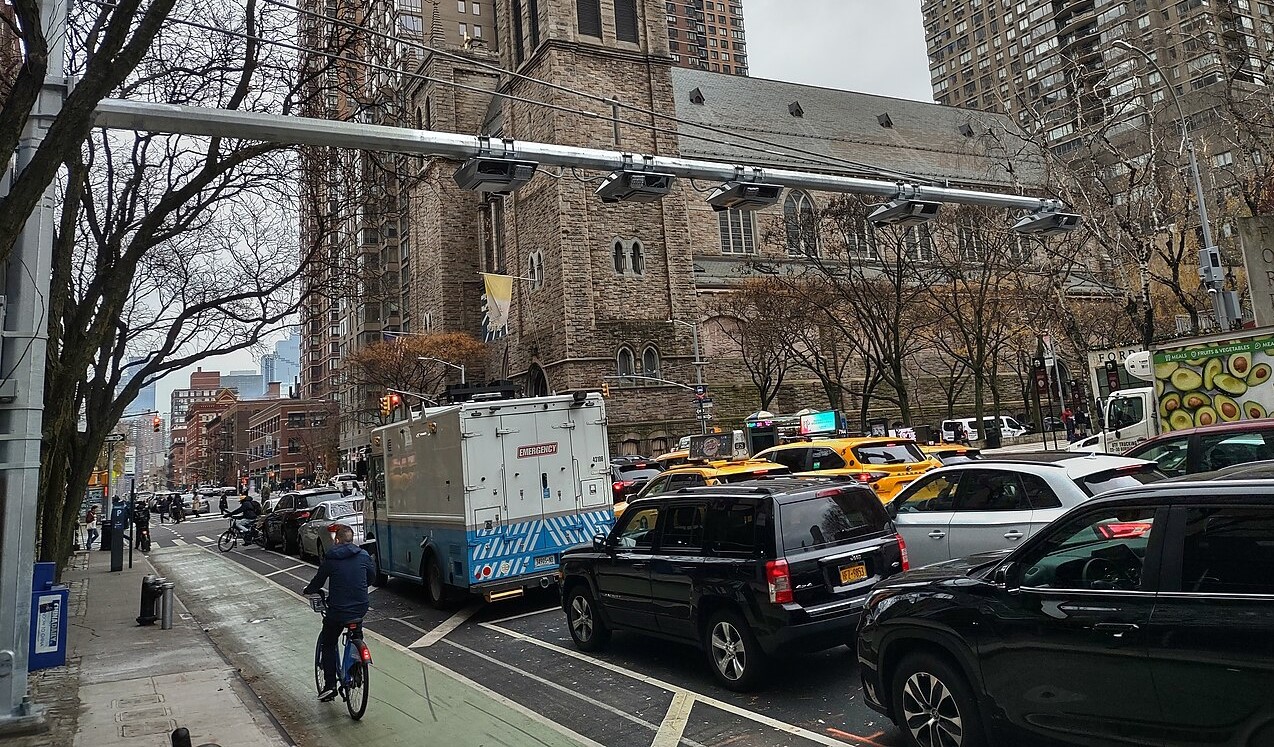 Chicago's commuter rail agency will be raising this bridge to help trucks pass underneath, relying exclusively on transit funding. Photo: The Urbanophile
Chicago's commuter rail agency will be raising this bridge to help trucks pass underneath, relying exclusively on transit funding. Photo: The UrbanophileTransit funding these days is, needless to say, scarce. Across the country, transit agencies are slashing services to cope with the gaping fiscal holes left by the recession. More than ever, every dollar counts.
It's in that context that a scoop by The Urbanophile's Aaron Renn is so jarring. In his hometown of Chicago, the commuter rail agency is embarking on a major new capital project, with a pricetag in the hundreds of millions, intended to help truckers, not transit riders. How is that siphoning of transit dollars to road users being achieved? Writes Renn:
The project in question is on the Union Pacific North Line. Metra is undertaking a project to replace 22 bridges and rebuild the Ravenswood station at a cost of $185 million and a timeline of eight years (?!). The bridges are 100 years old and there’s no question they need replacement. However, as part of this project, Metra is using transit dollars to raise the grade of the railroad to increase vertical clearance on the streets below it, and permanently destroying fully one third of the transit right of way in the process.
Further elevating the bridges wouldn't improve commuter rail service. The purpose is to allow taller trucks to pass under the bridges more easily. Renn continues:
I don’t philosophically object to raising the grade, but doing so dramatically increases the cost and complexity of the project. Metra is paying for that exclusively out of transit capital funds. One hundred percent of the value of raising the rail grade is for trucks. It has nothing at all to do with transit. Yet trucking and road funds aren’t even chipping in one cent.
I’m all in favor of an integrated transportation system without all these funding stovepipes but this is ridiculous.
And to top it all off, Metra will be eliminating a currently unused third track along the line, foreclosing the possibility of eventually using that track to expand capacity along the route. For Chicagoland readers understandably angry, Renn offers a "call to action" in his post -- check out the whole thing.
More from around the network: Jarrett Walker at Human Transit asks whether San Francisco's groundbreaking performance parking initiative might be too timid. I Bike T.O. calls out Toronto's mayoral candidates for their anti-bike stances. And Bike Baltimore files a dispatch from a bike-friendly beach town.





